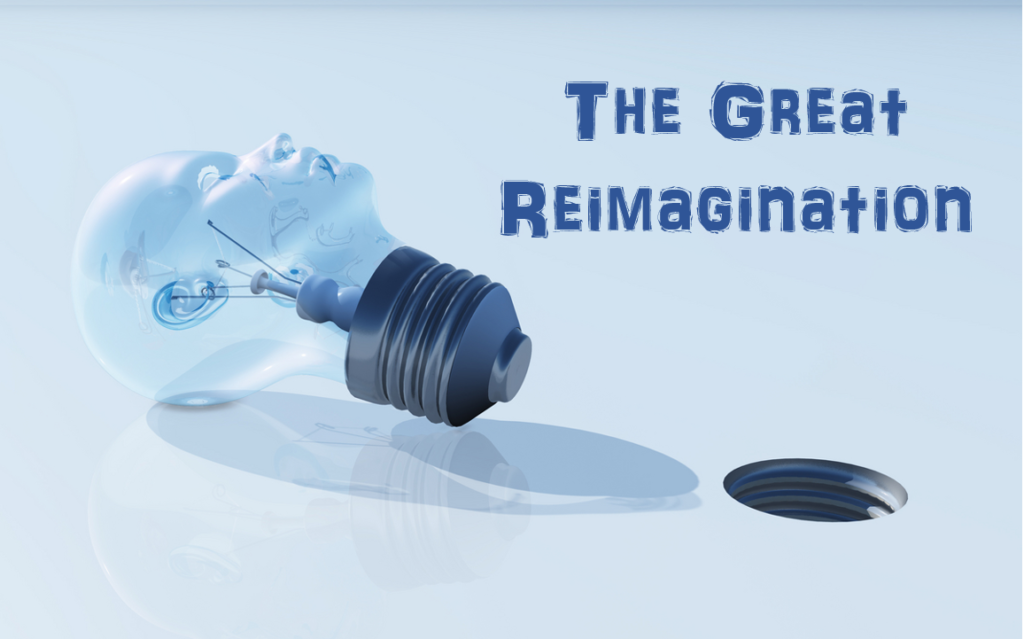The workforce landscape is in a bit of disarray. According to freelance writer Anne Field (@annefieldonline), “Many senior executives are struggling with an urgent talent crisis: the Great Resignation. The COVID-19 pandemic has induced waves of people to quit their jobs, seemingly in search of more meaning, more money, and more flexibility, among other wish-list items. The labor and skills shortage is now so severe that CEOs rank it as the No. 1 external issue they expect to influence or disrupt their business strategy within the next 12 months.”[1] In the opening installment of this article, I discussed some of the factors involved in the Great Resignation. However, as journalist Kendra Guidolin, points out, “It seems the jury is still out on the reasoning behind — or the significance, or even the existence of — this wave of resignations we’re seeing in the job market these days.”[2] Business leaders can’t afford to wait around for academic answers to this conundrum. Many of them are experimenting with ways to keep current employees and attract new ones. Field explains, “The steps companies take now to stop the bleeding can also stand them in good stead for an even bigger shift. Call it the Great Reimagination: a fundamental reexamination of workplace systems that can help businesses weather the future shocks sure to arise.”
The Great Reimagination
Guidolin notes, “Job seekers are taking the reins to negotiate details like salary, benefits, working conditions, and other details that otherwise may not have been afforded to them.” Sometimes, however, traditional enticements, such as better pay and working conditions, are not enough. Journalists Suzanne Kapner and Chip Cutter (@ChipCutter) report that when traditional enticements, like raising wages and offering cash bonuses for referrals, didn’t work for David Bridal, “The wedding dress retailer decided on a different approach: inviting employees to model in its advertising. … Employees get manicures and have their hair and makeup professionally done, services paid for by the company. They are trained to walk and pose for the camera. The images appear on David’s Bridal’s social-media accounts, website and in its stores and corporate offices. … For traditional photo shoots, employees are paid a flat stipend. Depending on the shoot, workers get to keep the clothes they wear, or receive free merchandise later.”[3]
That’s just one of the imaginative ways business leaders are coming up with to address the Great Resignation. Kapner and Cutter describe other imaginative approaches being used, “Beef and pork giant JBS USA Holdings Inc. is helping to build homes for employees to buy. Jeans maker Levi Strauss & Co. is offering free computer coding classes. Target Corp., Walmart Inc. and Amazon.com Inc. are offering to help pay for college tuition and books. Staffers at Chicago technology firm project44 can use a company-subsidized van — complete with a bed, a toilet and shower, and Wi-Fi — so they can combine work with family road trips.” Field reports that analysts from Deloitte believe the Great Reimagination provides employers with an opportunity to reconsider the whole work experience. They suggest four key workplace shifts companies should consider. They are:
Shift 1: From Jobs to Skills. Field writes, “Companies should shift from thinking that the best way to connect people with work is through static jobs to reimagining work as a landscape of tasks and skills that dynamically evolves with business priorities.” One of the reasons many organizations have implemented robotic process automation solutions is to free employees from tedious and repetitive work so they can unleash their talents in other, more profitable ways. Field reports that Deloitte analysts suggest the search for job candidates should focus more on skills than on experience. She explains one way to do this by identifying “adjacent skills.” She explains, “To expand the candidate pool, look at skills and adjacent skills instead of academic degrees or previous experience.”
Shift 2: From Employees to Workforce Ecosystems. If the Information Age has taught us anything, it’s the importance of ecosystems and networks. Field writes, “Larger, more diverse, and dynamic workforce ecosystems can be pivotal to an organization’s ability to thrive but likely require revising management and talent practices. … To fill urgent business needs, reach out beyond your employees to contractors, gig workers, organizational partners, or even AI and automation. … Rearchitect critical work streams. Identify the outcomes to be achieved — then get creative about the resources needed to produce them. This tactic can also help leaders recognize the key capabilities required to drive future growth and prioritize workforce segments based on the skills necessary to drive it.”
Shift 3: From Flex Work to Flex Everything. Not every work environment can be as flexible as employees might desire; however, whenever flexibility is possible it should be embraced. Most business consultants believe the future belongs to agile organizations and flexibility plays a significant in achieving that goal. Field writes, “Companies should move from a focus on engaging employees for the benefit of the company to creating value for workers as whole human beings and key stakeholders.” Deloitte analysts suggest looking at both compensation and work models. Field elaborates, “Conduct a pay audit and adjust pay to ensure compensation is fair in a rapidly evolving market. Consider spot bonuses for hot skills to quickly keep pace.” As Kapner and Cutter reported, other, more imaginative enticements should also be considered. Deloitte analysts agree. They report, “Research shows that money isn’t everything. Greater choice, flexibility, and stronger relationships at work are also important, as are expanded opportunities for promotions. More than twice as many respondents to a recent survey say it’s easier to get a new job outside their organization than within it.” When it comes to models of work, Deloitte analysts suggest, “Offer to flex the ‘where’ of work — e.g., with hybrid work models — and the ‘why’ of work — e.g., offering options to perform work aligned with people’s personal motivations.”
Shift 4: From Prediction to Rapid Experimentation. The motto for most businesses today should be “expect the unexpected.” Field adds, “In an increasingly complex and unpredictable world, companies should stop trying to predict the future and instead develop an ongoing culture of experimentation, testing, learning, and iteration — creating incremental change over time to allow for constant adjustments.” That’s all part of becoming an agile organization. Although I agree that predicting the future is often a fool’s errand, staying abreast of current trends and examining how they could affect company operations is critical. Cognitive computing solutions, like the Enterra Global Insights and Decision Superiority System™, can help organizations make sense of the complexity around them. Field notes cognitive solutions can also help identify employee trouble spots and opportunities. She writes, “Use the data you have now to develop insights into the root causes of attrition. Leverage newly available data from the ‘digital bread crumbs’ of remote work performed on digital platforms to identify the people whose departures could cause a disproportionate loss of value. Then target these vital players with appropriate retention activities.”
Concluding Thoughts
“In the last two years,” Field writes, “the world has faced a series of crises — COVID-19, the accelerating impacts of climate change, a reckoning with racial inequity. Addressing the next, inevitable crisis and preparing for the Great Reimagination will likely require a fundamental change at the highest levels — a long-term, sustainable, cross-functional collaboration across the C-suite.” The Great Resignation is obviously a challenge — and an opportunity to adapt to a new working environment. There will undoubtedly be some resistance and hurdles to overcome. Centuries ago, Niccolo Machiavelli, in his classic The Prince, wrote, “There is nothing more difficult to take in hand, more perilous to conduct, or more uncertain in its success, than to take the lead in the introduction of a new order of things, because the innovator has for enemies all those who have done well under the old conditions, and lukewarm defenders in those who may do well under the new.” Nevertheless, a Great Reimagination is worth pursuing.
Footnotes
[1] Anne Field, “From ‘the Great Resignation’ to ‘the Great Reimagination’,” The Wall Street Journal, 4 November 2021.
[2] Kendra Guidolin, “What’s at the Root of the Great Resignation 2021?” The HR Director The Blog, 2 November 2021.
[3] Suzanne Kapner and Chip Cutter, “When Bonuses and Raises Aren’t Enough, Try Manicures and Free Clothes,” The Wall Street Journal, 3 November 2021.





